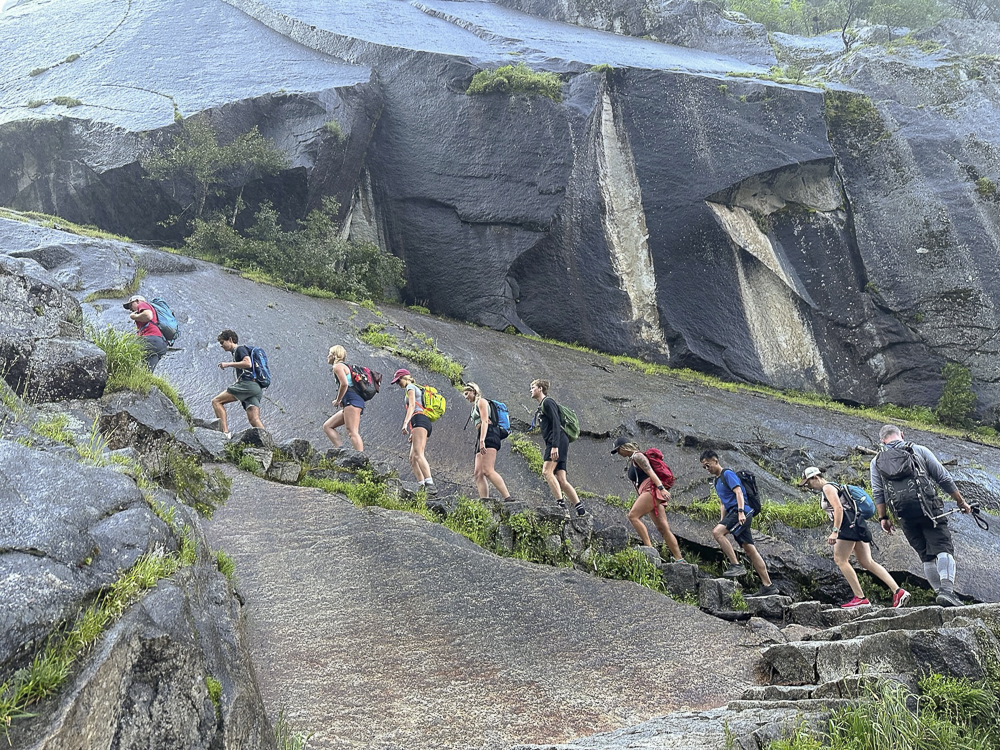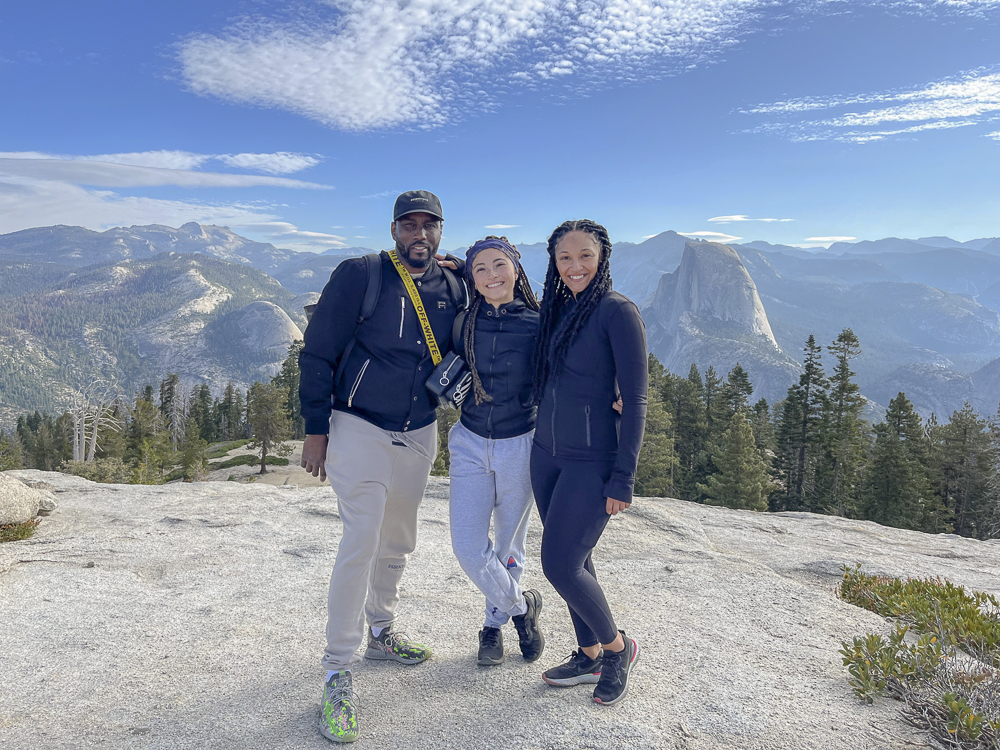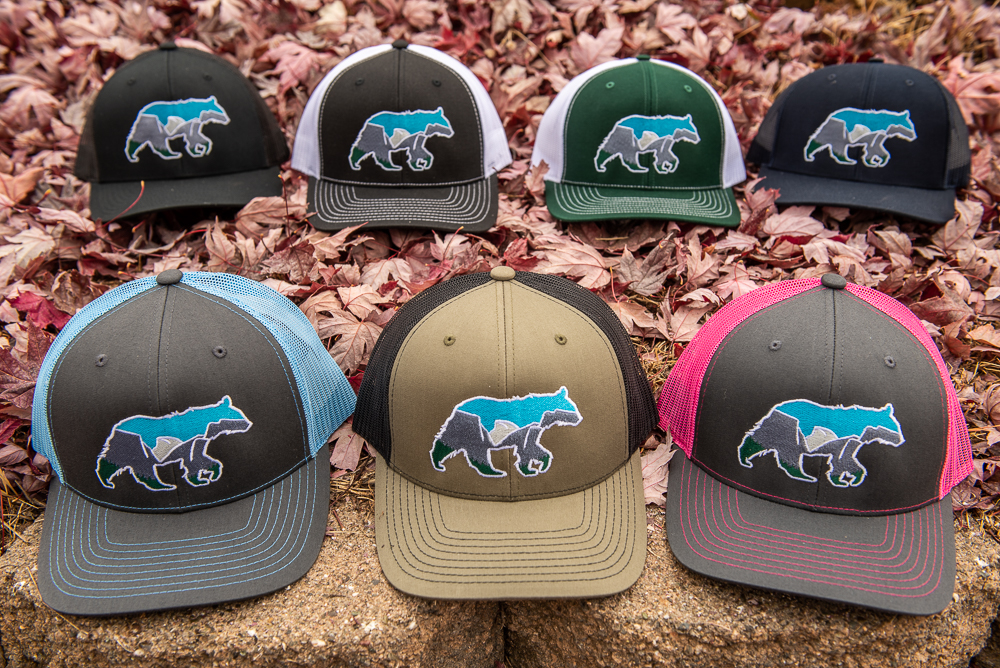What’s in My Pack to Help me Reach the Half Dome Summit
By John P. DeGrazio
As we embark on the summer season, many Yosemite hikers are preparing for their upcoming Half Dome summit attempt. Roughly 225 people per day will be starting their journey at Happy Isles with hopes of reaching the 8,842′ summit. As someone who has made this trip many times, I am often asked what I bring in my pack on my Half Dome hikes and would like to take the time to share this information with anyone preparing for this epic day hike. I would like to note that although I believe in my methodology (the way that I prepare and the products I use for this hike), there are many other alternatives that will also give you an excellent chance to be successful.
In the week building up to the hike, I like to make sure to maintain a healthy diet and stay well hydrated the entire day prior to the hike. I try to avoid any greasy fried foods that could potentially slow me down on the 16+ mile trek. I also try to avoid red meats, but that is just my preference. For dinner I normally try to eat pasta or a piece of grilled chicken or fish and make sure to eat a good amount of carbohydrates on the eve of the hike. I also tend to be constantly drinking water and try to consume about one gallon throughout the day.
Upon waking up, I eat a bowl of cereal or oatmeal with berries and drink about 20 ounces of water. I typically bring at least 120 ounces of water on a summer hike as well as my Katadyn Hiker water filter. I will say that how much water you bring is probably the most controversial topic on the Half Dome hike. My preference is to carry more to save time without having to stop to filter water as we approach the summit. I believe the time lost gathering water near the halfway point of the ascent is not worth the trade off. Some people do not like to carry more water, but I believe that your pack becomes lighter if you drink regularly as the day goes by. So many people run out of water before they even make the cables, and I have seen many people have negative physical reactions because of their lack of preparation. It is so vital to stay hydrated on this hike that I recommend at least 150 oz of fluids for the day. When you bring a water filter, it gives you a good opportunity to rest and soak your tired feet in the Merced River while you pump before you make it down to the Valley.
I always eat a banana before I begin this hike and have a protein bar within the first hour of walking. I have tried many but really have come to enjoy Power Crunch Bars by BNRG. The bars I enjoy most are the peanut butter fudge. Each bar contains 13 grams of protein and only 5 grams of sugar. This is only a fraction of the sugar used by all the major manufacturers. Other sources of protein I bring are 2 hard boiled eggs and a trail mix with any type of nuts. I like cashews, peanuts, walnuts, almonds along with sunflower and pumpkin seeds.
On this day, you need a good balance of protein and carbohydrates so I also like to bring some fruit like an apple or orange. Pretzels and crackers are also staples of my lunch sack as they also provide much needed salt. Remember, you will be sweating a lot and drinking only water can be harmful to you. With sweat, you lose a lot of salt so it is extremely important to replenish your body with electrolytes. Although everyone knows the big named energy drinks, I often try to avoid them because they are loaded with sugar and other potentially harmful ingredients. One is known as tartrazine. Other ingredients I try to avoid are high fructose corn syrup and crystallized fructose. I have found Alacer’s Emergen-C and Electro Mix to be pretty effective but it’s lack of salt has me trying others. My friend David is an Iron Man competitor, and he really likes the EFS products. I tasted them and they are pretty good, but can’t quite commit to a recommendation. I would need more time to sample them. Natural electrolytes from beets are also intriguing. Red Ace Organics makes a a supplement that includes 3 beets in one tiny bottle that is easy to take along on this hike. I like to drink one right before I begin the Sub Dome portion of the hike.
I normally bring one sandwich with me and it is usually turkey or peanut butter. I have noticed that some cheeses don’t hold up well on this hike in the hot summer so I normally omit the dairy. I also stay away from mayonnaise and stick with mustard or even some red wine vinegar. I bought a lunch sack from REI that has a slot for a small ice pack. I know it’s extra weight, but I am willing to carry it in summer months to prevent my lunch from spoiling in the hot sun. I have tried some cold pizza on the top (the cheese held up) and have also had leftover burrito which was also quite good. Be sure to bring a lunch you really enjoy because sometimes you will not want to eat, but it will be essential to have the energy to make the long 8+ mile descent. It is such a demanding day so it is nice to have some comfort foods with you (gummy bears, jelly beans, etc.) along the way. I personally like dark chocolate at the top of any summit, especially Half Dome. That is a hint, by the way, if you plan on ever joining me. I prefer Belgian or Swiss but will be happy with just about anything. This is one day you really don’t need to worry about calories. Most people will burn over 3000 on this adventure.
Moving along to the gear, I bring a day pack that is relatively light, but I often hear people ask “why do you carry a backpack with you on the cables?” My standard answer is to carry my food, water, and first aid kit. Some people leave their packs on the ground below the cables and often come back to bags that have holes chewed in them from hungry squirrels. Yosemite National Park strongly discourages leaving your pack unattended, and I believe you can receive a citation for it. Some people bring fanny packs to minimize what they carry, but I have seen people eliminate packing essentials just because they did not have any space left. This is a preference call, but I would go with a light day pack. I prefer brands like Lowe Alpine and Gregory, to name a couple. You don’t have to fill your entire pack, and it’s nice to have that extra room.
Inside my pack are essentials including a headlamp, light rain jacket (with a hood) for the Mist Trail, camera, sunscreen, insect repellent, and my first aid kit. Although you don’t need to carry a full kit, some items that you may need would be band aids, tissue, hand sanitizer, and blister care. There are 5 toilet areas along this hike but none after Little Yosemite Valley. If you do need to make a pit stop outside of these areas, please be sure to be 100 feet from the trail or any water source and remember to pack out any tissue or toilet paper you use. Wag bags are required on Mt. Whitney and it would also be a good idea to bring one with you on Half Dome. If you don’t, it is required to dig a hole 6 inches deep for solid human waste. Remember, that’s only what comes out of your body. You will need a trash bag to pack out all other waste, including fruit peels, nut shells, etc. Although they may be biodegradable, they will decompose at a much slower rate at higher elevations and become very unsightly. The main reason not to leave any trash or give any food to the wildlife is to prevent them from being accustomed to human food. This can be very bad for the health of the animals and discourages them from finding their own food which causes them to starve in winter.
Other notable items to bring for the hike would be a pair of sunglasses and a good hat to protect you from the sun. Mosquito repellent is a must in summer and I like to use a non deet formula. Burt’s Bees herbal insect repellent is not as effective as deet, but I do not like putting anything on my skin that melts plastic. It sometimes takes a second application but the oil based spray I use is normally strong enough for the Half Dome corridor. As a general rule, I only use deet a couple of times per year in some areas of Yosemite when the mosquitoes become too unbearable.
Hiking poles help many people protect their knees on this long journey. They can be most beneficial on the descent. I understand their value for added confidence but also know you exert more energy using them. It is completely your call, but if you use them, you may want to consider stowing them under a rock on the Sub Dome. Many careless cable climbers improperly strap them to their packs and poke people along the way. I have been prodded and almost impaled by these protruding poles. While we are on the subject of the cables, please keep all loose items inside your pack. I have seen hundreds of water bottles, cell phones, cameras, and other items take the 400+ foot fall because people thought the side pockets of their pack were secure. The only way to make sure these pieces of your property will remain protected is to zip them inside your pack.
As for clothing, I normally wear Patagonia Capilene t shirts and underwear. I know their products are more expensive than others but they are of such high quality and last a significant amount of time longer than most. The main thing to realize is that you do not want to wear any cotton on this or any other strenuous hike. Cotton holds water and can make for an uncomfortable afternoon. Columbia makes a lot of trail gear and can be a more affordable alternative. I will also bring a long sleeve layer to start the hike in the early hours which will also be good to protect against wind/sun later in the afternoon. I mentioned before that I bring a light packable rain jacket and I currently use the Marmot Precip jacket which can be found at many outdoor shops. To save space in my pack, I will wear my rain jacket to start the hike instead of an extra layer if it is a cold morning. I like to wear synthetic pants as well, and convertible hiking pants are just about one of the best inventions of the late 20th century. Several brands work well including Columbia, Mountain Hardwear and Ex Officio. I also bring rain pants on heavy snow years. The only socks I wear are Smartwool. Some will bring an extra pair of socks in their pack to have a fresh one to hike down in. Footwear is also a debatable topic as many people criticize others for wearing flip flops etc. I hike in low top light hikers by Salomon. I like to wear the hiking shoes because they provide better stability and protection against rocks. I no longer wear hiking boots on day hikes but still backpack in them. They have become much lighter, but I enjoy the versatility of the light hikers. Some sandal type shoes like Tevas and Chacos have very good gripping soles. I personally don’t want the bare skin on my foot to be exposed on this long day so that is why I will not recommend them. Others like to use the Vibram Five Finger shoes, but I have heard mixed results on them. I have heard they are great for going up hills but there is little support for the pounding your feet take on the descent. Regular tennis shoes will work on the hike but do not have good grip on granite that can be slick in some areas of this hike so I strongly urge others not to wear them. Running shoes would be more efficient and trail runners would be even better. I also know some people will argue to do it barefoot, but that is not something I would recommend.
For the cables, it is important to have good gripping gloves, and I like to use nitrile coated sticky work gloves from any hardware store. These are great and very cheap. I don’t think leather works well because hands slip pretty often. Suede is an ok alternative. I would recommend full fingered gloves but also know that is just a preference. I definitely would not recommend bike gloves or workout gloves as they normally are not made of tough enough material for the friction involved and may disintegrate on the way down. I also like to be equipped with some sort of a safety belt/harness to clip into the cables. There are many types you can buy. Just be sure to purchase a sturdy carabiner you know will be reliable. We use Black Diamond carabiners.

I am humble enough to know that although I may have summited this peak more than most people, I am not the only “expert voice” on Half Dome. That type of talk is pure hubris, and I would question myself if I thought I knew more about it than anyone else just because I’ve been to the top a few times. There are people that may disagree with some of my choices, but they are only suggestions. Being prepared should be your main focus of this and any other trip into the wilderness. My list should get you well prepared for an epic day that will be sure to change your life forever as it did for me one hot day back in July 2003. Best of luck and Happy trails. If you are interested in reading about more unique experiences at Yosemite, then please read here. Otherwise, find an overview of all available hikes at the Half Dome.
John DeGrazio is the lead adventure guide for YExplore Yosemite Adventures and regularly leads trips up Half Dome. YExplore offers Guided Half Dome hikes in Yosemite and can work with you to acquire permits in the preseason lottery in March of every year or the 48 hour lottery. We will also accommodate any group that already has acquired a permit for the hike and wishes to experience the added benefits of a guided adventure.




